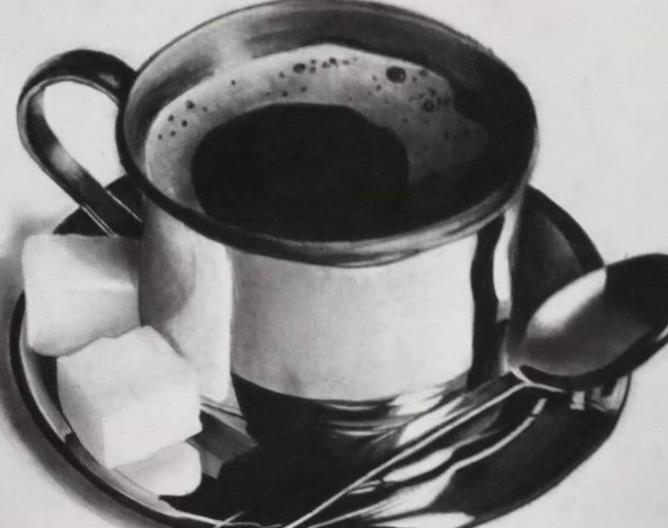
3 minute read
Trust Vaccines?
By Eusheka Rebancos
Graphic by Frances Vincent Decena
Advertisement
"not sure of its safety" – 84%, "vaccine might not be effective" – 7%, "a vaccine is not needed to combat COVID19"– 6%.Aside from this, 1% of survey respondents said they wouldn't have themselves vaccinated as the vaccine "might not be free," and "might be costly or expensive."
survey to determine who is vaccinated and who is willing to be vaccinated. Result revealed that large number of students, particularly senior high school students,areunvaccinated.
Covid-19 vaccines are crucial tools in the pandemic response. They provide at least some protection from infection and transmission, but not as much as the protection they provide against serious illness and death.
Are Facemasks Still a Thing?
By Eusheka Rebancos
With the continuously lowering rate of COVID-19 cases in the Philippines, newly elected president Bong Bong Marcos signed the Executive Order no. 7, s. 2022, which implemented the voluntary wearing of face masks in both indoorandoutdoorsettings.This order once again opened up an opportunity to minimize the community members protection, well-being, and resilience in the faceoftheCOVIDthreat.PNHS students,particularlyseniorhigh school students who wanted to be vaccinated, and members of the community partook in the saidprogram
Prior to the vaccination, the school clinic headed by the school nurse, Ma'am Venice Barrameda, R.N., conducted a
The school nurse believed that vaccinations were required in college, so she and the members ofherstaffwantedtoensurethat students would be accepted before graduating. It was also a precautionary measure, especially since the school welcomes students from nearby citiesandmunicipalities.
Furthermore, the school invited the University of Nueva Caceres (UNC) College of
With the order signed, it means that Filipinos wouldn't have to need to spend money on face masks anymore. It means they won'thavetosufferinhalingand exhaling in their masks. And it means that the country is surely managing after years of fighting foreveryone'slives.
However, COVID-19 is an airborne virus. It attacks whoever, whenever, and wherever. low case rates don't mean the virus is completely gone. with everyone living "normally" once again—no face masks, no social distancing, and sometimes others don't use sanitizers and alcohol anymore—the virus, sinking its claws in this county once again, willnotbeimpossible.
According to the world health organization(WHO),facemasks are used as a part of a broadgauge management strategy to suppress the transmission of the virus and save lives. However, covering our noses and mouths is simply not enough to protect us.

Nursing oheaded by Mr. Francisco Rico Raquitico to collaborate for the program where the student nurses were assigned in taking vital signs, recording, taking vital signs, recording, documentation,andvaccination. surgical masks—and the worsts managingjust7%. masks are used for source control,whichreferstoblocking droplets ejected by the person wearingit.moststudiesshowthe filtration effectiveness of cloth masksrelativetosurgicalmasks. particle sizes for speech are on the order of 1 μm, whereas the typical definition of droplet size varies from 5 μm to 10 μm. the filtration rate of generally available household materials is between49%and86%forevery 0.02μmexhaledparticles.onthe other hand, surgical masks filter 89%ofthoseparticles. public health standards of the countryduringthestateofpublic health emergency regarding the pandemic.
Meanwhile, the Rural Health Unit (RHU)-Pili facilitated the distribution of the Pfizer shots and boosters where they placed it in a cold chain management system, a method used to keep the right temperature for the vaccines and boosters, in order to ensure the proper vaccine administration.
Three-layered masks, particularly those which includes a disposable filter set, tendtobethemosteffective.The fabrictypealsomattered,andthe worst-performing masks only have a single layer of mostly polyester. Which suggested to lookforamixofdifferentfabrics such as cotton, polypropylene, anddifferenttypesofpolyester.
Almost two years ago, with the viral cases skyrocketing each second, people couldn't even step a foot outside of their households without a face mask on. Securities were strict, public transportation drivers were temporarily prohibited, and each barangayhadsetrulesgoverning safetypatrols.
Face masks, that is to say, were crucial—such small pieces of fabric protected us and everyone around. They were hoarded, given,styled,overpriced.
"Wearing a medical mask can help limit the spread of some respiratory diseases," the organizationalsostated.
During the recent investigation of the British consumer magazine, which? It was proven that there's a huge variation in the ability of fabric masks to filter particles.The best ones are abletofilterout99%ofbacteriasized particles—as good as
Face masks have served as our looking glass to view the pandemic throughout. And it gave us the ability to access the world amid the change of the Covid-19. Face masks are nothing but ordinary; but it’s whatprotectedusthroughoutthe pandemic. And it still might be the only thing that may protect usafter.









